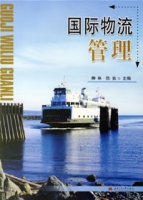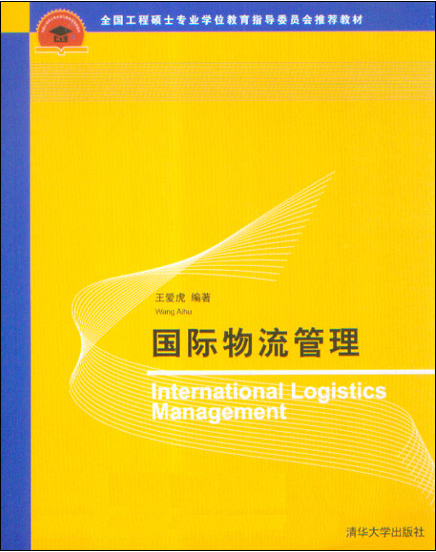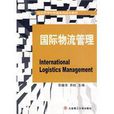蘇振東版本
章節目錄
第一章 國際物流學概述
第二章 國際物流系統與網路
第三章 國際物流運輸
第四章 國際貨物運輸保險
第五章 國際物流中的檢驗檢疫及電子化
第六章 國際物流中的海關實務
第七章 國際物流信息系統與標準化
第八章 國際物流服務
參考文獻
柳林版本
圖書信息
出版社:西南交通大學出版社
出版日期:2006-3-1
內容提要
本書從五個方面介紹國際物流這個複雜而動態的學科:
 柳林《國際物流管理》
柳林《國際物流管理》第一部分,綜述國內外有關國際物流的理論與實踐,提出當前國際物流管理領域有待深入探討的內個問題;第二部分,簡要回顧現代
物流管理的基礎知識,從現代物流的定義出發,分析它所涉及的活動要素、分類、重要學說及其與新經濟條件下電子商務的密切關係;第三部分,闡述國際物流的興起背景、標準化、系統模型及有關中介,對國際物流口岸和中國入世後有關物流的市場閃入承諾表做了精要概括;第四部分,從國際運輸管理、
物流信息管理、國際物流中心管理、全球
供應鏈管理、第三方物流管理、單證管理等方面找出我國國際物流管理與世界高水平物流需求之間存在的主要差距;第五部分,提出發展我國國際物流的戰略措施。
本書最大的特點就是為各種類型的讀者提供了“訂單式”的選擇模組:訂單一,擺脫傳統教科書的繁雜冗長,快速搭建起國際物流管理的理論框架;訂單二,通過對物流經典案例的超級連結,給每塊“骨頭”附上鮮活的“血肉”。這種“訂單式”選擇模式為各種層次的讀者熟悉國際物流知識提供了極大的便利。
作者簡介
柳林,男,1974年生,河北滄州人。先後獲得西南交通大學工學學位和西南財經大學經濟學碩士學位,有紮實的國際物流管理理論基礎和豐富的教學經驗。現為中央某報特約記者,撰寫了很多經濟評論文章,在國內學術期刊上亦有不少論文登載,至今已主編並出版著作三部,總計一百餘萬字。
章節目錄
第1章 國際物流的研究現狀
1.1 國外的物流理論與實踐
1.2 國內的物流理論與實踐
1.3 需要進一步研究的問題
第2章 現代物流概論
2.1 現代物流的含義
2.2 現代物流的活動要素
2.3 現代物流的分類
2.4 現代物流學說
2.5 電子商務與物流
2.6 入世回眸
第3章 國際物流
3.1 國際物流興起的背景
3.2 國際物流的重新界定
3.3 國際物流標準化
3.4 國際物流系統模型
3.5 國際物流中介
3.6 國際物流口岸
3.7 中國入世時有關物流服務貿易的承諾
第4章 國際物流管理
4.1 國際運輸管理
4.2 信息管理
4.3 國際物流中心管理
4.4 全球供應鏈管理
4.5 第三方物流管理
4.6 單證管理
4.7 其他管理
第5章 中國國際物流存在的問題與發展舉措
5.1 存在的問題
5.2 發展舉措
附錄一 海牙規則
附錄二 維斯比規則
附錄三 漢堡規則
附錄四 FIATA國際貨運代理業示範規則
附錄五 中華人民共和國海關法
附錄六 中華人民共和國海商法
附錄七 中華人民共和國貨物進出口管理條例
參考文獻
逯宇鋒版本
國際物流管理 第2版 | | | |
書號: | 28991 | ISBN: | 978-7-111-28991-3 |
作者: | 逯宇鋒 等編 | 印次: | 2-2 |
責編: | 常愛艷 | 開本: | 16(B5) |
字數: | 365 千字 | 定價: | ¥30.00 |
所屬叢書: | 21世紀高等學校經濟管理類教材 | | |
裝訂: | 平 | 出版日期: | 2010-09-20 |
內容介紹
本教材共11章,第1章國際物流概述、第2章國際物流與進出口貿易、第3章國際
物流系統與網路、第4章國際物流中的檢驗檢疫、第5章國際物流中的海關實務、第6章國際物流航線與港口、第7章國際物流
海洋運輸、第8章國際物流其他運輸方式、第9章國際
貨物運輸保險、第10章國際
物流信息系統與標準化、第11章國際海運物流服務。
 逯宇鋒《國際物流管理》
逯宇鋒《國際物流管理》本教材吸收和借鑑了國內物流管理的最新研究成果,既有理論性,又有很強的實用性和可操作性,內容全面,結構新穎,既可作為高等院校的教材,也可作為各種類型的專業培訓教材,同時也是各層次物流管理人員的必備讀物。
章節目錄
第2版前言前言
第1章國際物流概述
1.1國際物流的定義
1.2國際物流的特點
1.3物流分類
1.4國際物流的發展趨勢
1.5物流的全球化
1.6國際物流管理的內容
複習與思考
第2章國際物流與進出口貿易
2.1出口交易程式
2.2進口交易程式
2.3國際電子商務操作過程
複習與思考
第3章國際物流系統與網路
3.1國際物流系統的構成要素
3.2國際物流系統模式
3.3國際物流節點
3.4國際物流網路
複習與思考
第4章國際物流中的檢驗檢疫
4.1進出口商品檢驗檢疫的作用
4.2進出口商品檢驗的任務
4.3進出口商品檢驗的時間和地點
4.4出入境檢驗檢疫機構
4.5進出口商品檢驗檢疫的項目
4.6進出口商品檢驗檢疫的模式與流程
複習與思考
第5章國際物流中的海關實務
5.1報關制度
5.2進出口貨物的通關制度
第6章國際物流航線與港口
6.1船舶概況
6.2船舶檢驗與登記
6.3海港
6.4航線
6.5著名航運公司
第7章國際物流海洋運輸
7.1國際航運船舶經營方式
7.2班輪貨運程式
7.3提單
7.4班輪運價與班輪公會
7.5貨櫃運輸與國際多式聯運
7.6租船程式
複習與思考
第8章國際物流其他運輸方式
8.1國際鐵路貨物聯運
8.2國際航空貨物運輸
8.3國際公路運輸
8.4國際郵政運輸
第9章國際貨物運輸保險
9.1保險的基本原則
9.2我國海運貨物保險條款
9.3國際貨物運輸保險條款
9.4其他運輸方式下的貨運保險
9.5我國貨物運輸保險實務
複習與思考
第10章國際物流信息系統與標準化
10.1國際物流信息系統概述
10.2國際電子商務
10.3條碼技術在國際物流中的套用
10.4國際物流信息系統的設計
10.5國際物流標準化
第11章國際海運物流服務
11.1海上貨運代理
11.2船舶代理
11.3國際貨運代理物流運作
複習與思考
參考文獻
王愛虎版本
圖書信息
出版社:清華大學出版社
出版日期:2009 年7月
內容介紹
《國際物流管理》結合國際
物流管理領域國內外研究的最新成果,對國際物流管理的基本理論和方法進行了詳細介紹;並以粵港國際物流為例,剖析了海運和空運等
物流運輸模式在國際物流中的地位和作用。

《國際物流管理》分為上、下兩篇,共19章。上篇是國際物流管理理論,內容包括國際經濟與貿易的發展及其對國際物流的影響、對外直接投資及其對國際物流的影響、跨國公司經營戰略的轉變、國際物流和供應鏈管理在提高區域經濟競爭力中的作用、國際物流系統的構成與規劃、國際海上運輸、國際航空運輸、陸橋運輸、國際物流中的信息標準化、國際物流的發展趨勢;下篇是粵港國際物流案例研究。書後還有兩個附錄,附錄a是2009年國務院發布的《物流業調整和振興規劃》文稿,附錄b是根據《中國海關報關手冊》整理而成的中國海關報關實務,目的是方便讀者對相關內容的了解和掌握。
章節目錄
上篇 國際物流管理理論.
第1章 國際經濟與貿易的發展及其對國際物流的影響/3
1.1 全球經濟和貿易的發展趨勢3
1.1.1 全球經濟的發展趨勢3
1.1.2 全球貿易的發展趨勢5
1.1.3 全球化和區域化及其帶來的挑戰6
1.2 開發中國家間的區域合作與貿易融合9
1.2.1 區域貿易合作以及有效的貿易融合方式9
1.2.2 開發中國家間區域融合的度量10
1.2.3 區域融合的兩種模式15
1.3 中國經濟和國際貿易的發展現狀16
1.3.1 中國經濟的總體發展趨勢16
1.3.2 中國對外貿易的發展趨勢17
1.4 國際物流的發展現狀22
1.4.1 國際航空物流的發展22
1.4.2 國際海運物流的發展29
第2章 對外直接投資及其對國際物流的影響/35
2.1 對外直接投資理論35
.2.1.1 已開發國家對外直接投資理論綜述36
2.1.2 開發中國家對外直接投資理論綜述39
2.2 國際直接投資的發展現狀和特點46
2.2.1 fdi在全球的發展現狀46
2.2.2 fdi的發展趨勢和特點51
2.3 衡量fdi績效的量化指標53
2.3.1 外國直接投資流入業績指數53
2.3.2 外國直接投資流入潛力指數54
2.3.3 fdi流入業績和潛力指數矩陣55
2.3.4 外國直接投資流出業績指數56
2.4 離岸投資的發展趨勢和特點57
2.4.1 離岸金融中心的總體發展情形57
2.4.2 離岸金融中心與中國經濟發展的關係58
2.5 中國企業利用離岸金融中心進行資本運作的方法62
2.5.1 國內企業註冊離岸公司的目的62
2.5.2 離岸公司的資本運作模式64
2.5.3 國內企業紅籌股上市的負面影響66
2.5.4 我國針對離岸公司避稅的相應對策66
第3章 跨國公司經營戰略的轉變/69
3.1 跨國公司的併購行為及其發展趨勢70
3.1.1 跨國公司的全球併購70
3.1.2 跨國公司的國際化製造71
3.1.3 世界最大的跨國公司75
3.1.4 跨國公司跨國程度的度量78
3.2 跨國公司的全球業務外包模式78
3.2.1 離岸外包的由來79
3.2.2 通過離岸外包尋求長期競爭優勢80
3.2.3 中國吸引跨國外包的經濟環境分析84
3.3 物流業跨國併購解析87
3.3.1 物流企業跨國經營的模式87
3.3.2 物流業併購的主要動因91
3.3.3 全球物流業併購的數據解析92
3.3.4 中國物流業的併購分析101
第4章 國際物流和供應鏈管理在提高區域經濟競爭力中的作用/106
4.1 愛爾蘭的經濟發展狀況106
4.2 物流與供應鏈管理在愛爾蘭經濟發展中的作用111
4.3 愛爾蘭國際物流系統的形成和發展趨勢112
4.4 愛爾蘭國際物流發展面臨的挑戰114
第5章 國際物流系統的構成與規劃/116
5.1 全球物流系統概述116
5.2 國際物流系統的構成117
5.2.1 港口117
5.2.2 船公司和航空公司120
5.2.3 海關121
5.2.4 檢驗檢疫 121
5.2.5 保稅區 123
5.2.6 出口加工區126
5.2.7 途途物流園區 127
5.2.8 第三方物流服務提供商 128
5.3 歐洲國際物流系統規劃和設計的經驗總結128
5.3.1 各種運輸模式發展現狀的分析129
5.3.2 內河水系與腹地產業區間的可達性分析132
5.3.3 港口群和水運系統中貨櫃碼頭的系統規劃133
5.3.4 物流結點、園區和通道的規劃思路133
5.3.5 多式聯運系統的設計136
5.3.6 區域國際物流系統的整體規劃和設計137
5.4 中國物流業調整和振興計畫解讀137
5.4.1 中國物流業調整和振興計畫主要內容 138
5.4.2 中國物流業振興計畫解析138
第6章 國際海上運輸/142
6.1 港口與城市以及臨港工業發展間的關係142
6.1.1 港口與城市關係的演變規律142
6.1.2 港口與臨港產業的關係144
6.1.3 國外臨港工業的發展145
6.1.4 我國臨港工業的產業選擇147
6.2 港口群的崛起149
6.2.1 世界港口群重心的轉移149
6.2.2 國內港口群151
6.3 全球貨櫃海運業的發展狀況152
6.3.1 貨櫃港口的能力、績效與建設成本153
6.3.2 全球十大貨櫃港口基本情況160
6.3.3 世界海運貨櫃主要航線163
6.3.4 全球十大班輪公司164
6.3.5 中國港口貨櫃吞吐量的發展情形165
6.4 貨櫃運輸的發展趨勢166
6.4.1 貨櫃化進程166
6.4.2 貨櫃船舶大型化趨勢168
6.4.3 貨櫃船舶大型化的必然性169
6.4.4 貨櫃船舶大型化對港口業的影響170
第7章 國際航空運輸/174
7.1 航空運輸對區域經濟發展的影響175
7.1.1 航空運輸的經濟屬性175
7.1.2 航空運輸對區域經濟的影響176
7.2 美歐國際航空運輸業市場化歷程180
7.2.1 美國航空運輸業市場化經驗180
7.2.2 歐盟航空運輸業市場化經驗182
7.3 航空樞紐概念的產生及其對航空運輸業的影響184
7.4 國際航空運輸發展現狀186
7.4.1 全球航空運輸業經營情況186
7.4.2 全球國際機場、航線和貨運量187
7.4.3 中國航空運輸業的發展情形193
7.5 客機的大型化及其對國際航空運輸業的影響197
第8章 陸橋運輸/202
8.1 陸橋運輸的由來202
8.2 世界著名大陸橋簡介203
8.2.1 北美大陸橋203
8.2.2 亞歐大陸橋205
8.3 國外陸橋運輸發展經驗208
8.3.1 經營管理體制208
8.3.2 國際協調機制208
8.3.3 政策環境209
8.4 新亞歐大陸橋的發展現狀及對中國西部大開發的影響210
8.4.1 新亞歐大陸橋貨櫃運量的發展情況210
8.4.2 新亞歐大陸橋國際協調機制211
8.4.3 新亞歐大陸橋與中國的西部大開發211
8.5 陸橋經濟時代212
第9章 國際物流中的信息標準化/214
9.1 分類與編碼簡介215
9.1.1 什麼是物資分類和編碼215
9.1.2 為什麼要對物資進行分類和編碼215
9.1.3 物品分類目錄標準的兩大體系216
9.2 世界通用的三大商品分類國際標準216
9.2.1 商品名稱和編碼協調系統216
9.2.2 國際貿易標準分類217
9.2.3 主要產品分類標準218
9.2.4 三大國際分類標準的協調219
9.3 信息分類編碼的原則和方法..220
9.3.1 分類的原則220
9.3.2 分類的方法221
9.3.3 編碼方法和編碼的原則221
9.3.4 代碼的種類222
9.3.5 信息分類編碼標準化及其與管理信息系統間的關係223
9.4 物資分類編碼與自動識別技術間的關係224
9.4.1 自動識別技術與條碼的歷史224
9.4.2 ean/ucc-13代碼與物資編碼的關係226
9.4.3 物聯網227
9.4.4 產品電子標識227
9.5 《全國產品與服務統一代碼編制規則》強制性國家標準230
第10章 國際物流的發展趨勢/233
10.1 恐怖主義及其對國際物流的影響233
10.1.1 “9·11”事件對國際貿易和航空物流的影響234
10.1.2 “9·11”事件後美國的應對措施237
10.1.3 “9·11”事件後國際的應對措施238
10.2 途途逆向物流240
10.2.1 跨國企業開展逆向物流的原因240
10.2.2 跨國企業逆向物流管理實踐242
10.2.3 案例:索愛退貨和維修處理245
10.3 無線射頻識別技術247
10.3.1 無線射頻識別技術簡介247
10.3.2 rfid技術在貨櫃運輸中的套用248
10.4 途途應急物流252
10.4.1 2008年國中國的雪災應急救援252
10.4.2 案例:戴爾的應急管理措施255
下篇 粵港國際物流案例研究案例前言261
第11章 粵港國際物流研究綜述/264
11.1 研究背景264
11.2 研究現狀265
11.3 研究思路267
11.4 研究架構268
11.5 小結270
第12章 粵港國際物流業腹地物流環境詳析271
12.1 引言271
12.2 廣東省歷年gdp和產業結構的變化情況272
12.3 廣東省fdi的規模、來源和產業分布273
12.3.1 廣東省fdi的規模274
12.3.2 廣東省fdi的來源275
12.3.3 廣東省fdi的產業分布276
12.4 廣東省對外貿易276
12.4.1 廣東省對外貿易的規模276
12.4.2 廣東省對外貿易的流向277
12.4.3 廣東省對外貿易的產品結構278
12.4.4 廣東省外貿出口額占gdp的比重281
第13章 廣東省製造業生成的國際貨物總量及其配比的變化和影響283
13.1 引言283
13.2 粵港國際海運物流業貨運量分析284
13.2.1 廣東省製造業生成的國際貨櫃總量284
13.2.2 廣東省國際貨櫃生成總量在粵港配比及其變化286
13.2.3 粵港兩地國際貨櫃運輸業發展態勢分析286
13.2.4 廣東省國際物流業貨櫃化率和貨櫃生成係數分析287
13.3 廣東省製造業生成的國際航空貨運總量290
13.4 廣東省gdp和外貿進出口額與製造業生成的國際貨物量間的關係292
13.4.1 廣東省gdp和外貿進出口額與製造業生成的國際貨櫃總量間的關係293
13.4.2 廣東省gdp和外貿進出口額與製造業生成的國際航空貨物總量間的關係294
13.5 小結295
第14章 珠三角國際物流運輸模式分析296
14.1 引言296
14.2 珠三角在廣東省經濟中的地位297
14.3 prd國際貿易中運輸模式總體分析298
14.3.1 prd出口貿易運輸模式分析298
14.3.2 prd進口貿易運輸模式分析299
14.4 香港在prd國際貿易物流中的地位300
14.4.1 香港在prd出口物流中的地位300
14.4.2 香港在prd進口物流中的地位301
14.5 小結302
第15章 粵港國際海運物流發展態勢詳析304
15.1 引言304
15.2 前提說明305
15.3 珠三角海運國際貿易305
15.4 香港在prd出口海運物流中的地位306
15.5 香港在prd進口海運物流中的地位308
15.6 粵港國際海運商品結構詳析310
15.6.1 海運貿易前15種商品所占比例的變化311
15.6.2 海運進出口中前15種商品的折合單價311
15.6.3 海運進出口中前15種商品的構成314
15.7 小結318
第16章 粵港國際航空物流發展態勢詳析320
16.1 引言320
16.2 前提說明321
16.3 珠三角航空進出口貿易321
16.4 香港在prd出口空運物流中的地位322
16.5 香港在prd進口空運物流中的地位324
16.6 粵港國際空運商品結構詳析325
16.6.1 空運貿易中前10種商品所占比例的變化326
16.6.2 空運進出口中前10種商品的折合單價326
16.6.3 空運進出口中前10種商品的構成328
16.7 小結332
第17章 商品單價與運輸模式選擇間的關係334
17.1 引言334
17.2 珠三角國際貿易商品種類選擇335
17.3 同類商品出口單價與進口單價間的關係研究335
17.3.1 同類商品海運出口單價與進口單價對比335
17.3.2 同類商品空運出口單價與進口單價對比337
17.3.3 同類商品出口單價與進口單價對比分析338
17.4 出口和進口同類商品海運和空運運輸模式下商品單價的對比關係研究339
17.4.1 出口貿易中同類商品海運和空運單價的對比關係339
17.4.2 進口貿易中同類商品海運和空運單價的對比關係339
17.4.3 四類商品的行業特點342
17.5 小結343
第18章 粵港國際物流基礎設施發展現狀344
18.1 粵港兩地海運基礎設施現狀和發展規劃344
18.1.1 香港港口現狀和發展規劃344
18.1.2 廣東省沿海主要港口現狀和發展規劃345
18.2 粵港兩地空運基礎設施現狀和發展規劃348
18.2.1 香港機場發展現狀348
18.2.2 廣東省航空機場基本情況和發展規劃348
18.3 粵港兩地國際貨運能力評估和分析349
18.3.1 粵港貨櫃港口合理通過能力預測349
18.3.2 五大機場的設計貨運能力352
18.3.3 分析352
18.4 小結353
第19章 香港國際物流發展戰略354
19.1 香港港口海運物流業發展戰略分析354
19.1.1 香港港口海運物流業swot分析354
19.1.2 香港港口物流業發展戰略359
19.1.3 政策建議360
19.2 香港航空物流業發展戰略分析361
19.2.1 香港航空物流業swot分析361
19.2.2 香港航空物流業發展戰略建議365
19.2.3 政策建議366
19.3 小結367
附錄a 物流業調整和振興規劃368
a.1 發展現狀與面臨的形勢368
a.2 指導思想、原則和目標370
a.3 主要任務371
a.4 重點工程375
a.5 政策措施377
a.6 規劃實施379
附錄b 中國海關報關實務380
b.1 最新進出口法律法規列表380
b.2 海關通關係統常用代碼表及說明382
b.2.1 海關監管方式代碼表及其說明382
b.2.2 運輸方式代碼表388
b.2.3 貨幣代碼表389
b.3 商品綜合分類表389
參考文獻.../395
英文目錄
Theinternational logisticsmanagement theory.
The firstchapter of the internationaleconomy andtrade developmentand its impact on theinternational logisticseffect /3
The 1.1 globaleconomic and trade development trends3
1.1.1 globaleconomytrend of development 3
1.1.2 Globaltradedevelopment trend of 5
1.1.3globalization and regionalizationand the challenge brought by6
1.2regional cooperation among developing countriesand tradeintegration of the 9
1.2.1regional trade cooperationand effectivetradeintegrationmode 9
1.2.2between the developing countryregional integrationmeasure10
1.2.3regionalintegration of the twomode 15
The 1.3ChinaInternationalEconomicandtrade development present situation16
1.3.1Chineseeconomyoverall development trend ofthe 16
1.3.2Chinaforeign tradedevelopment trend of 17
The 1.4 internationallogistics development22
1.4.1 internationalaviationlogistics development22
1.4.2 internationalshipping logisticsdevelopment 29
The secondchapter offoreign direct investment and itsinfluenceon internationallogistics/35
The theory of foreign direct investment352.1
.2.1.1 developedthe theory of foreign direct investmenton36
2.1.2 developingforeign direct investment theoryand 39 Reviews
The 2.2 internationaldirect investmentdevelopment present situation and thecharacteristics of 46
2.2.1FDI inthe global development situation46
2.2.2FDIcharacteristic and developing trend of the51
2.3 gaugeFDI performanceindex53
2.3.1inflows of foreign direct investmentperformanceindex 53
2.3.2inflow of FDIPotential Index54
2.3.3FDI inflowperformance and potential indexmatrix 55
2.3.4foreign direct investmentoutflowperformanceindex 56
2.4offshoreinvestmenttrendsand characteristics of 57
2.4.1offshore financialcenter overallsituation57
2.4.2offshore financialcenterand the development of Chinese economyand the relationship between the 58
2.5Chineseenterprisesuse OFCscapital operationmethods 62
2.5.1 domesticenterprises Offshore Company Registrypurpose 62
2.5.2 Off Shore Companycapital operationmode 64
2.5.3domestic enterprisesred chips listednegative effect66
2.5.4in our country for theOff Shore Company tax avoidancecountermeasures66
The third chapterMulti-National Corporation management strategytransformation /69
3.1Multi-National Corporation merger and acquisition behaviorand the trend of development 70
3.1.1Multi-National Corporation's globalM & 70
3.1.2Multi-National Corporation internationalmanufacturing71
3.1.3the world's largestMulti-National Corporation 75
3.1.4 Multi-National Corporationmultinationaldegree78
3.2Multi-National Corporation's globaloutsourcingmode 78
3.2.1offshore outsourcingorigin 79
3.2.2 throughoffshore outsourcingto seek long-termcompetitive advantage 80
3.2.3Chinain attracting international outsourcingeconomic environmentanalysis of 84
The 3.3logistics industrytransnational M & Aanalysis of 87
3.3.1 logisticsenterprise's transnational operationmode 87
3.3.2 logisticsindustry mergers and acquisitionsmainmotives 91
3.3.3 global logisticsindustry merger and acquisitiondataanalysis92
3.3.4Chinalogistics industryM & Aanalysis of 101
The fourthchapter of the internationallogistics and supplychain managementin improvingthe competitiveness of regional economyand the role of /106 in
4.1of Ireland's economicdevelopment106
The 4.2logistics and supply chainmanagement in Ireland's role in the economic development ofthe 111
4.3Irish internationallogisticssystem's formation and the developmenttrend of the 112
4.4Irish internationallogistics developmentchallenge114
The fifthchapter of the internationallogisticssystem constructionand planning /116
5.1global logisticssystem overview116
The 5.2international logisticssystem consists of117
The 5.2.1 port117
5.2.2shipping companies and airlines120
5.2.3customs 121
The 5.2.4inspection and quarantine121
5.2.5bonded area 123
5.2.6 exportprocessing zone in the 126
5.2.7wayof logistics park127.
5.2.8 thirdparty logisticsservice provider 128
The 5.3European internationallogisticssystem planning anddesignexperience128
5.3.1 variousmodes of transportdevelopment present situation analysis129
5.3.2river systemsand hinterlandindustryintervalreachability analysis132
The 5.3.3 portandwaterwaysystem incontainer terminalsystem planning 133
5.3.4logistics node,parkandchannelplanning ideas133
5.3.5multimodalsystem design136
5.3.6regionalinternational logisticssystemplanning anddesign 137
5.4Chinalogistics industry restructuring and revitalizationplanof137
5.4.1Chinalogistics industry restructuring and revitalizationplan main content138
5.4.2Chinalogistics industryrevitalizationplan138
The sixthchapter of the internationalmaritime transport/142
6.1port andcityas well as thedevelopment of the industry that face harborbetween142
6.1.1evolvement of relationship between city and portrule 142
The 6.1.2 portandharbor industrialrelations 144
6.1.3 foreignLingang IndustrialDevelopment 145
6.1.4China's portindustryin 147
6.2portgroup rise abruptlyin 149
The 6.2.1 worldhaven groupthe move of centre of gravityof 149
6.2.2 domestichaven group151
6.3globalcontainer shippingindustry in152
The 6.3.1container portcapacity,performance andconstructioncost 153
6.3.2the world's ten largestcontainer portfundamental condition 160
The 6.3.3 worldcontainer shippingroutes163
6.3.4 globalten majorliner companies164
6.3.5Chinaport container throughputdevelopment165
The 6.4container transportdevelopment trend of 166
The 6.4.1containerprocess 166
The 6.4.2container ship maximizationtrend 168
6.4.3 containership is large changeinevitability 169
6.4.4large container ships inportindustry influence170
The seventhchapter of the internationalair transport/174
7.1air transporteffects on regional economic development175
7.1.1air transporteconomicattribute 175
7.1.2aviationtransports on the regional economiceffects of 176
The 7.2Europeaninternational air transportindustry marketcourse 180
7.2.1the United Statesair transportindustry marketexperience 180
7.2.2 EUair transportindustry marketexperience 182
The 7.3aviationhub conceptgeneration and's impacts on air transportation184
The 7.4international airtransport development status186
7.4.1 globalair transportindustry management186
7.4.2 GlobalInternational Airport,flights andcargo 187
7.4.3Chinaaviation transportation industry developmentsituation 193
7.5 aircraftoflarge scale andtheinternational air transportindustry influence197
Chapter eighthland bridge transportation/202
Theorigin 2028.1bridge transport
8.2world famousContinentalBridge203
8.2.1North Americamainland bridge203
8.2.2Eurasian Continental Bridge205
8.3foreign land bridge transportationdevelopment experience 208
8.3.1management system208
2088.3.2 internationalcoordination mechanism
8.3.3policy environment 209
8.4bridge of new Asia-Europe mainlanddevelopment situation andonChinawestern the influence of big development210
The 8.4.1container of bridge of new Asia-Europe mainlandtrafficdevelopment210
8.4.2international of bridge of new Asia-Europe mainland211coordinationmechanism
8.4.3bridge of new Asia-Europe mainland andChinawestern big development211
8.5overbridge economy times212
The ninthchapter of the internationallogisticsinformationstandardization/214
Classification andcodingof 2159.1
9.1.1 whatis the materialclassification andcode 215
Why would 9.1.2onmaterialclassification andcode 215
9.1.3articlesdirectorystandardtwo system216
The 9.2worldthreebig commodityclassification216
9.2.1Harmonized Commodity Description and codingsystem 216
9.2.2standard international tradeclassification217
9.2.3 main productsclassificationstandard 218
9.2.4three internationalclassification standard ofthe coordination of the 219
9.3information classification and codingprincipleandmethod..220
The 9.3.1 classificationprinciple 220
9.3.2 classificationmethod 221
9.3.3coding method and codingprinciple221
9.3.4 codetype222
9.3.5standardization of information classification codingandmanagement information system inthe 223
The 9.4 materialclassification codingand recognition ofthe 224
9.4.1technology of automatic identification andbar code224
9.4.2ean/ucc-13 codeandmaterial codingand the relationship between the 226
9.4.3 Internet of things227
9.4.4products electronicidentification 227
9.5"countrywide product and serviceuniformcode"mandatory national standards230
The tenthchapter of the internationallogistics developmenttrend /233
10.1terrorism and itsinfluenceoninternational logistics233
10.1.1"9 ·11"event on internationaltrade andtheeffects of 234aviation logistics
10.1.2"9· 11" after incidentthe United Statesmeasures237
10.1.3"9 ·11" after incidentinternationalmeasures238
10.2 way ofreverse logisticsin 240.
10.2.1 multinationalenterprisesreverse logisticsreason 240
10.2.2 multinationalenterprise reverse logisticsmanagementpractice of the 242
Case 10.2.3:Sony Ericssonreturn andrepairprocessing245
The 10.3wireless radio frequency identificationtechnology 247
10.3.1 wirelessradio frequency identificationtechnology247
10.3.2RFIDtechnology in the container transportin the application of 248
10.4 way ofemergency logistics252.
10.4.1China at the beginning of 2008Snow DisasterEmergency Rescue252
Case 10.4.2:Dellemergency management measures255
TheHong KongInternational Logisticscase studythe 261
The eleventhchapter oftheinternational logisticsresearch/264
11.1background264
Research statusof 26511.2
11.3 research ideas267
The 11.4research framework268
11.5of270
The twelfthchapter oftheinternationallogistics industryhinterlandlogistics environmentanalysis of271
12.1271.
GuangdongProvince for years12.2GDP andthe change of industrial structuresituation 272
12.3GuangdongProvinceFDI scale,source andindustrialdistribution273
GuangdongProvinceof 12.3.1FDIsize274
GuangdongProvince12.3.2FDIsource 275
12.3.3FDIGuangdongProvinceIndustrial Distribution276
GuangdongProvince Foreign Trade27612.4
12.4.1GuangdongProvince foreign tradesize276
12.4.2GuangdongProvince foreign tradeflow277
12.4.3GuangdongProvince foreign tradeproductsstructure 278
12.4.4GuangdongProvinceforeign trade exportsaccounted for the proportion of GDP281
The thirteenthchapter ofGuangdongProvincemanufacturing industry generatesinternational goodsamount andratio ofchanges and the effects of283
13.1283.
The 13.2Hong Konginternational shippinglogisticsfreight volumeanalysis284
13.2.1GuangdongProvincemanufacturing industry generatesa total of 284internationalcontainer
13.2.2GuangdongProvinceinternational container to generateaggregates inGuangdongratio andchange 286
13.2.3Guangdonginternational container transportindustry developmentsituation analysis286
13.2.4GuangdongInternationalLogisticscontainerandcontainer to generate coefficientanalysis of 287
 柳林《國際物流管理》
柳林《國際物流管理》 逯宇鋒《國際物流管理》
逯宇鋒《國際物流管理》

